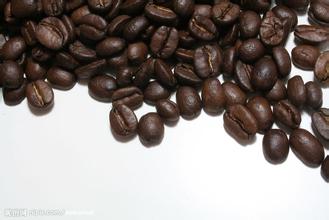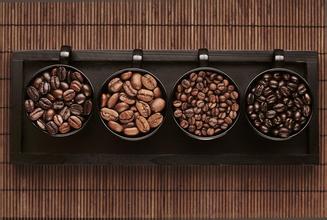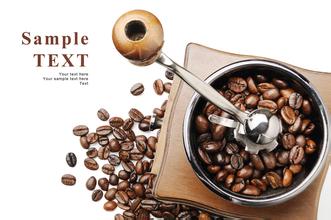Colombia Ramon Coffee Bean Flavor Description Variety Characteristics Area of Origin Treatment Grinding Scale Introduction
Colombian Ramon Coffee Bean Flavor description Variety characteristics area treatment Grinding scale introduction
Plenty of sunshine and rainfall are very suitable for coffee growth. In recent years, however, Jos é Ramon Corazos, who lives in the southern province of Uila, has gradually discovered that he is producing less and less coffee on his plantation, and the most important factor is global climate change. The rainy season is getting longer and longer and the light is getting less and less, posing a serious threat to the growth of coffee. The increase of Rain Water has also prompted a large number of wild fungi to multiply, "robbing" to occupy the growth space of coffee trees. In response to this situation, scientists have developed eight new varieties of coffee based on genetics, and it is hoped that the annual output of coffee in Colombia will reach 15 million bags in the next four years. Colombia is the world's leading producer and exporter of coffee, and coffee is Colombia's third largest export product earning foreign exchange. Colombia produced 8.9 million bags of coffee in 2010 and 7.8 million bags in 2009, both below the annual average of 11 million to 12 million bags. In order to increase production, 80, 000 hectares of coffee varieties have been renewed in Colombia in 2010, with a target of 100000 hectares in 2011. In 2013, Colombia's coffee production surpassed Indonesia and returned to the third place in the world, after Brazil and Vietnam.
The main varieties of Colombian coffee are small grains of coffee. Plants are small trees or large shrubs, 5-8 m tall, usually much branched at base; old branches gray-white, nodes dilated, young branches glabrous, compressed. Leaves thinly leathery, ovate-lanceolate or lanceolate, 6-14 cm long and 3.5-5 cm wide, apex long acuminate, acuminate part 10-15 mm long, base cuneate or slightly obtuse, rarely rounded, entire or shallowly wavy, both surfaces glabrous, lower vein axils with or without small pores; midrib raised on both surfaces of leaf, 7-13 on each side of lateral veins; petiole 8-15 mm long Stipules broadly triangular, arising from the tip of the upper part of the young branch conical or awn tip, the tip of the old branch is often protruding tip, 3-6 mm long. Cymes several clustered in leaf axils, each with 2-5 flowers, without a peduncle or with a very short peduncle; flowers fragrant, with pedicels 0.5-1 mm long; bracts more or less connate at base.
Coffee workers go up the mountain to pick coffee beans (also known as coffee cherries) by hand, so they can pick carefully and pick the most ripe and full fruits. The vast majority of Colombian coffee beans are water-washed and moderately roasted with a light silky and sometimes sour taste, which is not as strong as Brazilian coffee and Italian Expresso and is known as "green gold".

Important Notice :
前街咖啡 FrontStreet Coffee has moved to new addredd:
FrontStreet Coffee Address: 315,Donghua East Road,GuangZhou
Tel:020 38364473
- Prev

Introduction to the method of grinding and calibrating the flavor description of Honduran coffee beans
Honduran Coffee Bean Flavor description characteristics of Honduran Coffee varieties Grinding scale treatment method introduces the extremely balanced characteristics of Honduran coffee makes it widely used. Can be used to mix coffee, can also be used as a single product to brew, mixed with Honduran coffee Italian concentrate will have a surprising effect. Although in troubled times, coffee can also grow its own wonderful, it is not difficult to understand as
- Next

Introduction of Yunnan Tiepi Katim Coffee Bean Flavor description treatment Variety characteristics producing area
Yunnan Tippi Katim Coffee Bean Flavor description method Variety characteristics of Yunnan Tippi Katim Coffee Bean (bourbon): this variety is derived from Tippi Katim and was expanded by the French in 1708 on the island of Bourbon (now known as Reunion). Bourbon also has a beautiful aroma and rich flavor, which is higher in yield and growth than iron pickup, and is suitable for planting at 12002000 meters.
Related
- Detailed explanation of Jadeite planting Land in Panamanian Jadeite Manor introduction to the grading system of Jadeite competitive bidding, Red bid, Green bid and Rose Summer
- Story of Coffee planting in Brenka region of Costa Rica Stonehenge Manor anaerobic heavy honey treatment of flavor mouth
- What's on the barrel of Blue Mountain Coffee beans?
- Can American coffee also pull flowers? How to use hot American style to pull out a good-looking pattern?
- Can you make a cold extract with coffee beans? What is the right proportion for cold-extracted coffee formula?
- Indonesian PWN Gold Mandrine Coffee Origin Features Flavor How to Chong? Mandolin coffee is American.
- A brief introduction to the flavor characteristics of Brazilian yellow bourbon coffee beans
- What is the effect of different water quality on the flavor of cold-extracted coffee? What kind of water is best for brewing coffee?
- Why do you think of Rose Summer whenever you mention Panamanian coffee?
- Introduction to the characteristics of authentic blue mountain coffee bean producing areas? What is the CIB Coffee Authority in Jamaica?

